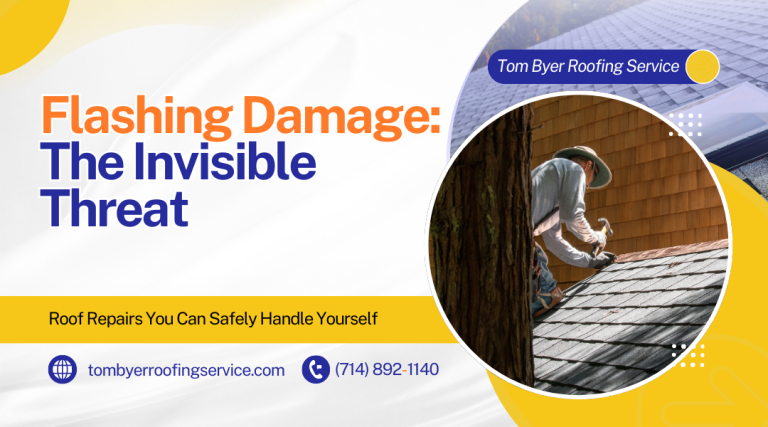Flashing is a critical component of your roofing system. It is often overlooked but plays a key role in directing water away from vulnerable areas. When flashing fails, it can lead to roof leaks and serious structural damage that may require costly repairs. Understanding the importance of proper flashing installation and maintenance can save you from headaches down the line.
If you have flat or low-slope roofs, the risk of flashing issues becomes even more pronounced. These types of roofs rely heavily on effective waterproofing techniques because water can pond and accumulate if drainage isn’t managed properly. Taking the time to inspect and repair flashing can help protect your home from leaks and other water-related damage.
Maintaining the integrity of your roof starts with understanding how flashing functions. Engaging with a trusted roofing contractor, like Tom Byer Roofing Service in Garden Grove, can ensure your roofing system is well-protected against the elements. Be proactive and address any flashing concerns before they escalate into major problems.
Common Flashing Issues That Cause Roof Leaks
Flashing plays a critical role in protecting your roof from leaks. Understanding specific issues related to flashing can help you identify potential problems before they escalate. Here are some of the most common flashing issues that lead to roof leaks.
Cracked or Rusted Flashing
Flashing can crack or rust over time, especially in older roofs. Cracks allow water to seep underneath, leading to leaks. Rust forms when metal flashing is exposed to moisture without proper protection.
To avoid this, regularly inspect your roof flashing for cracks and clean any rust spots. Replacing damaged flashed is essential for maintaining roof integrity. Consider using materials like aluminum or copper, which have better resistance to rust. Prioritizing these repairs helps prevent long-term structural damage.
Poor Installation Practices
Improper installation of flashing can create gaps that lead to leaks. For example, if step flashing is not installed correctly, it may not divert water properly away from the roof.
Always ensure that flashing is installed according to manufacturer guidelines. Hiring a qualified roofing contractor is crucial to avoid these common installation errors. Paying attention to detail during installation plays a significant role in preventing flashing failure in the long run.
Loose Flashing Due To Weather
Weather conditions can cause flashing to become loose. High winds, heavy rain, or extreme temperatures can weaken the seals that hold flashing in place.
Inspect your roof after significant weather events to ensure that flashing remains secure. If you notice any loose areas, promptly reseal or reattach them. This practice prevents water from entering beneath the flashing and causing further issues.
Flashing Damage Around Chimneys and Skylights
Chimneys and skylights are common areas where flashing issues arise. Improperly sealed flashing can lead to leaks around these fixtures. Water can easily accumulate and cause damage if not addressed.
Ensure that apron flashing and counter flashing around chimneys and skylights are intact. Checking for proper alignment and seals will help you spot any potential issues. Regular maintenance of these areas is essential to prevent leaks.
Sealant Failure on Flashing Joints
Sealants used in flashing joints can break down over time due to exposure to the elements. When this happens, water can infiltrate your roof, leading to leaks.
Regularly inspect the sealant for cracks and wear. Reapplying sealant as needed can significantly reduce the risk of leaks. Choosing high-quality sealants designed for roofing applications helps to prolong the lifespan of your flashing joints.
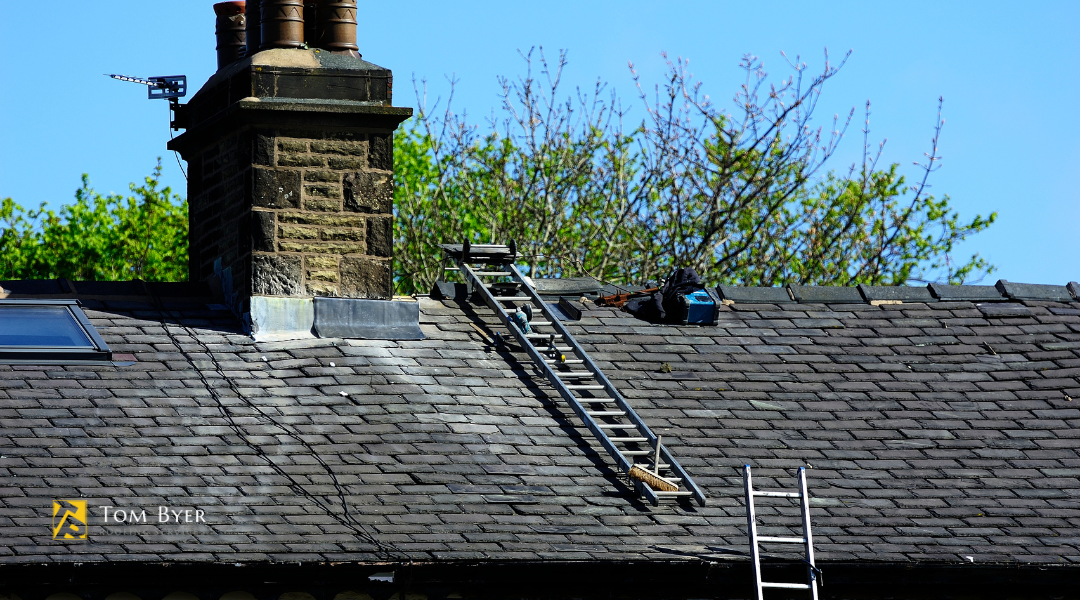
How Flashing Problems Lead to Structural Damage
Flashing problems can create significant risks for your roof and home structure. These issues can lead to water infiltration, mold growth, and even compromised structural integrity. Addressing flashing issues promptly is vital to preventing long-term damage.
Water Seepage into Roofing Materials
When flashing is damaged or improperly installed, it can cause water seepage into roofing materials. Water can enter areas around chimneys, vents, and skylights, leading to significant issues.
As the moisture accumulates, it weakens roofing materials. This can result in water damage, causing deterioration in shingles or tiles. Eventually, the damage can spread to other parts of your roofing system, affecting its durability and lifespan.
Mold and Mildew Growth in the Attic
Water infiltration from faulty flashing can create a perfect environment for mold and mildew growth. Mold thrives in damp conditions, making your attic a prime target.
The presence of mold not only affects air quality but also poses health risks to you and your family. Mold can spread quickly, damaging insulation and structural components. Regular inspections of your attic can help identify mold growth early before it escalates.
Compromised Insulation Efficiency
Water intrusion can compromise the efficiency of your insulation. When water seeps into insulation materials, they become less effective at regulating temperature. This means you may face higher energy bills as your heating and cooling systems work harder to maintain comfortable temperatures.
Inadequate insulation can also lead to drafts and uncomfortable living spaces. Addressing flashing problems helps maintain insulation performance, ensuring your home remains energy-efficient.
Rotting of Roof Decking and Beams
Continued water exposure can lead to wood rot in roof decking and beams. This rotting compromises the structural integrity of your roof. Over time, the weakened materials can cause sagging or even collapse.
Fascia boards are also at risk of rotting due to water penetration through damaged flashing. If you notice soft spots in your roof or visible water stains, it’s crucial to act quickly to prevent further decay.
Increased Risk of Ceiling Collapses
When water damage and wood rot occur over time, the risk of ceiling collapses increases significantly. Compromised roof structure can no longer support its weight, leading to dangerous situations within your home.
The presence of water stains on ceilings or walls can indicate severe underlying issues. Regular roof inspections can help you catch such risks early, allowing for timely repairs and maintaining safety in your home.
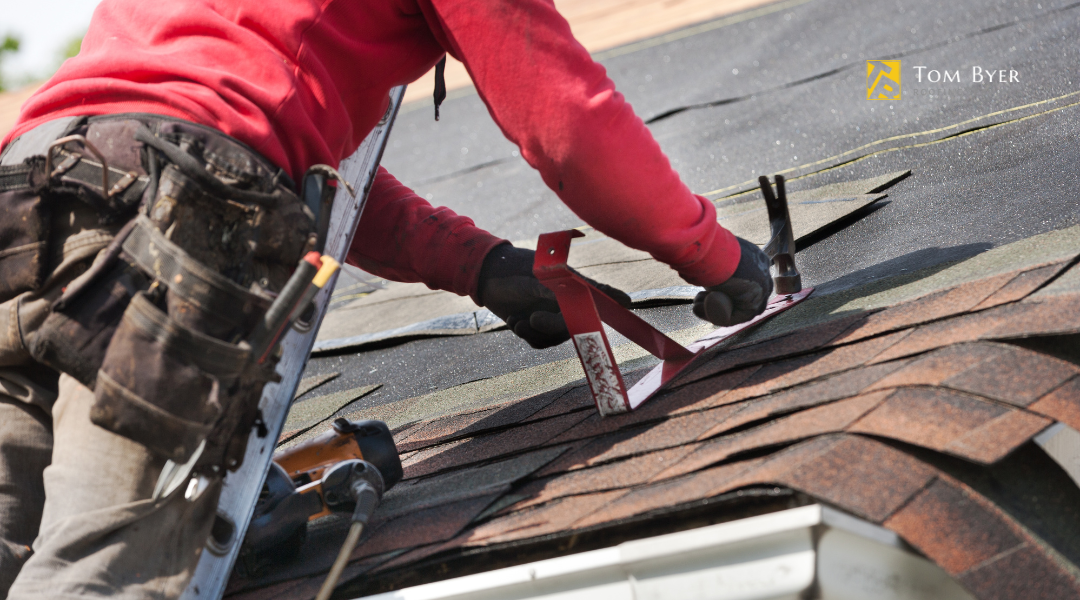
Key Statistics on Flashing Failures and Roof Damage
Flashing plays a crucial role in protecting your roof from leaks and damage. Understanding the statistics surrounding flashing failures can help you make informed decisions about your roofing system.
Percentage of Roof Leaks Attributed to Flashing Issues
Research shows that approximately 90% of roof leaks are tied to flashing problems. This includes issues at critical points such as chimneys, vents, and roof-to-wall intersections. When flashing installation is poor, water can easily penetrate these vulnerable areas, leading to significant damage.
Flashing made from materials like aluminum, copper, or lead is designed to withstand weather conditions. However, if not installed correctly, even the best materials can fail, resulting in costly repairs. Regular inspections can help catch these problems early and prevent major leaks.
Average Cost of Repairs for Flashing-Related Damage
The cost of repairing flashing-related damage can vary greatly. On average, you might spend between $300 and $1,100 for minor issues. More extensive repairs can range from $1,100 to $1,500 or more, especially if multiple areas of your roof are affected.
If you require a complete replacement of flashing alongside other repairs, such as shingles, the costs can climb significantly. Investing in high-quality flashing materials and proper installation can minimize the need for future repairs and save you money in the long run.
Longevity of Properly Installed Flashing vs. Poorly Installed Flashing
Properly installed flashing can last up to 30 years, depending on the materials used. For instance, high-quality copper flashing is known for its durability. On the other hand, poorly installed flashing can fail within just a few years, leading to leaks and more extensive roof damage.
To maximize the lifespan of your flashing, ensure it’s installed by professionals who understand the specific requirements of your roofing structure. Regular maintenance checks will also help identify any weaknesses early, allowing for timely repairs. This proactive approach can significantly extend the life of both your flashing and your roof.
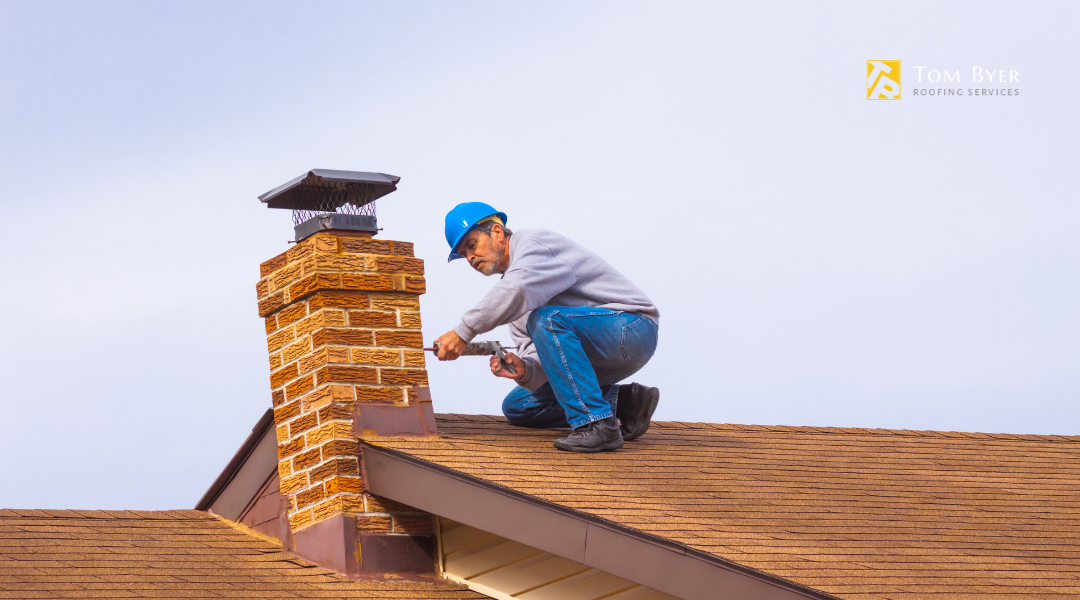
Practical Examples of Flashing Repairs and Solutions
Flashing issues can lead to significant roof leaks and damage if left untreated. Here are some specific examples of how to address these problems, emphasizing repairs and solutions you can apply effectively.
A Case Study of a Chimney Flashing Fix
In many homes, chimney flashing is a common area for leaks. A recent case involved a client experiencing water stains on their ceiling. Upon inspection, it was found that the metal flashing was corroded and improperly sealed.
The repair involved removing the old flashing and replacing it with a durable, pre-painted metal flashing. Roofing cement was applied generously around the edges to ensure a watertight seal. Finally, caulking was used to fill any gaps, providing an extra layer of protection. This thorough approach stopped the leaks and prevented further damage to the roof and interior.
Resolving Skylight Leaks with New Flashing
Skylights can enhance natural light but also pose leak risks. A homeowner noticed water pooling around their skylight. An inspection revealed that the existing flashing had cracked and degraded over time.
To address this, the old flashing was removed, and new flashing was installed. The new flashing was specifically designed to direct water away from the skylight seams. The use of strong roofing cement helped create a secure bond. Finally, caulking was applied to ensure that all potential leak points were sealed. This resolved the leaks and improved the skylight’s durability.
Upgrading Flashing for Long-Term Durability
In older homes, upgrading flashing can be crucial for long-term roof health. One homeowner decided to replace their outdated step flashing that had started to fail. After assessing the condition, it was clear that new, higher-quality flashing would provide better protection.
The installation process involved lifting the shingles to replace the old flashing with a sturdy metal option. This modern flashing was designed to withstand the elements better than its predecessor. With proper installation, including the appropriate use of roofing cement and caulking around the edges, the new flashing helped prevent leaks. This proactive upgrade ensured the home was safeguarded against water intrusion for years to come.
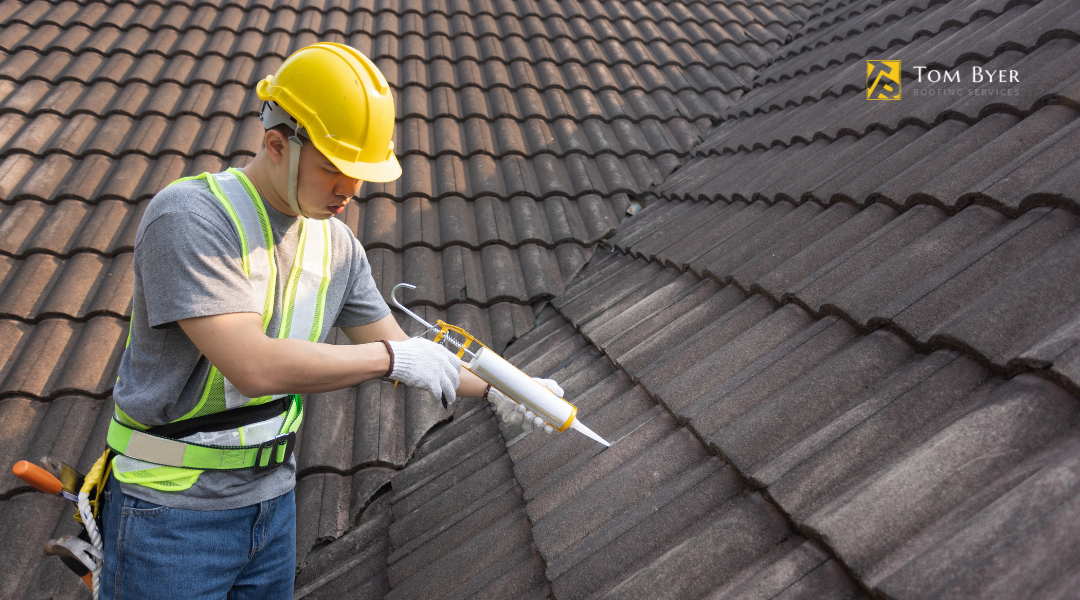
Expert Tips to Prevent Flashing-Related Issues
Taking proactive steps to prevent flashing-related issues can save you from costly repairs and extend the life of your roof. Focusing on regular inspections, high-quality materials, proper sealing, and addressing minor problems early is essential.
Schedule Regular Roof Inspections
Regular roof inspections are critical for maintaining the integrity of your home. Aim for at least two inspections each year, especially after severe weather conditions. During these check-ups, you should look for signs of wear and tear around flashing areas, such as cracks, rust, or loose materials.
Hiring a professional roofer who understands the importance of flashing can ensure a thorough evaluation. They will check for issues that may not be visible to the untrained eye. Regular inspections help detect small problems early, preventing them from escalating into significant leaks or structural damage.
Invest in High-Quality Materials
Investing in high-quality materials for your roof flashing is essential for long-lasting protection. Choose flashing made from durable materials like copper or stainless steel, which can withstand harsh weather conditions.
The initial cost may be higher, but superior materials provide better weatherproofing and reduce the need for frequent repairs. Always check that materials are suitable for your specific climate. This can make your roof more energy-efficient by reducing heat loss and improving insulation.
Ensure Flashing Is Properly Sealed
Proper sealing of roof flashing is vital to prevent leaks. Ensure that all seams and joints are sealed well with quality caulk or sealants specifically designed for roofing applications.
It’s advisable to check the condition of the sealant regularly. If you notice any gaps or peeling, replace or reapply the sealant without delay. A well-sealed flashing protects your roof from water intrusion, which can lead to mold growth and structural issues over time.
Address Minor Issues Before They Escalate
Addressing minor issues as they arise can save you significant hassle down the road. If you notice small cracks in your flashing or water pooling in certain areas, take action immediately.
Ignoring these problems may result in more severe damage, demanding costly repairs. Keep an eye on areas around chimneys, vents, and skylights, where flashing is crucial. Regular maintenance and quick fixes can enhance the lifespan of your roof and maintain its energy efficiency.
Conclusion
Flashing issues can lead to significant roof leaks and structural damage. Addressing these problems early is essential to protect your building.
If you notice any signs of damage, consult a roofing contractor. They have the expertise to identify and fix flashing problems effectively.
Key Points to Remember:
- Regular Inspections: Schedule routine inspections to catch minor issues before they worsen.
- Prompt Repairs: Act quickly on any signs of water damage or leaks.
- Quality Materials: Use high-quality flashing materials to enhance the longevity of your roof.
By staying proactive, you can safeguard your commercial building against major repairs and maintain its value. Protecting your investment ensures that your roof remains sound and your property remains safe. If you need assistance, consider reaching out to Tom Byer Roofing Service for professional help in Garden Grove, California.

